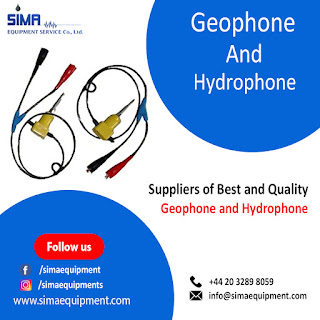AI and IoT integration with geophysical equipments: Redefining earth exploration
Resource exploration and Earth sciences have modernized to an extent where relying on traditional practices cannot generate the expected results. Problems like manual data interpretation, human error, and difficulty accessing remote areas are prominent. Processes are allowed down by a great extent. Anomalies and discrepancies are introduced in the results, which further makes it difficult for geologists to make accurate predictions.
IoT: Creation of a smart geophysical
network
Different geophysical equipments are now
being integrated with advanced communication modules and IoT-based sensors.
These will enable professionals to:
a. Operate remotely in areas that cannot be accessed easily by humans
b. Transmit data to centralized systems without depending on a wired
communication network
c. Collect accurate, raw data in real-time from different equipment units
d. Monitor structural and environmental changes continuously
Take a network of seismometers deployed in
an earthquake-prone region as an example. Now, geologists and other research
professionals would have to visit the site in person to collect data from the
equipment units. It can cause delays and also an increase in the error margin.
But with IoT-enabled seismometers, data can
be directly transmitted to a cloud-based system. To top it off, it will help in
24/7 monitoring, allowing professionals to respond promptly to any warnings.
AI: Transforming raw data into deep insights
Modern geophysical exploration depends on
how data is interpreted and visualized. This is where artificial intelligence
systems have a major contribution! Integrated with machine learning algorithms,
these allow easy detection of patterns, analysis of diverse datasets, and generation
of actionable insights.
Some of the major tasks where AI can be
successfully implemented are;
a. A seismic equipment unit can be integrated with an AI model
to recognize different patterns accurately and with higher precision. It will
help professionals analyze the shifts of tectonic plates in high-risk areas,
especially along the fault lines.
b. It also helps in separating background noise from useful signals in
readings acquired from a magnetometer or GPR.
c. Machine learning models can use predictive AI to forecast any sudden
shift in the geological activities. This will help professionals predict
whether there is any likelihood of an earthquake or volcano.
AI and IoT: A powerful amalgamation
AI models powered by computer vision,
machine learning, and natural language processing will be able to interpret
data generated from IoT sensors correctly. No human dependency will be required
for data processing or visualization. In addition, predictive maintenance will
help professionals determine failure risks of vital geophysical equipments.
Some of the major areas where these two
technologies will bring a change when combined are:
a. Smart urban planning with integration of subsurface data
b. Monitoring of oil and gas pipelines
c. Continuous analysis of slope stability in mining and infrastructure-related
operations
d. Mapping and management of different water resources
Challenges to expect with technology
integration
While modern geophysical equipments can help navigate around the hassles
of traditional practices, the technology adoption process won’t be a walk in
the park. Professionals should prepare themselves to encounter a vast array of
hiccups. Some of these are:
a. IoT devices transmitting sensitive information can become vulnerable to
cyber threats without proper security layers.
b. Integrating diverse datasets from different sources will create
discrepancies. A proper standardized format will be necessary for accurate
visualization.
c. These equipment units will require a continuous power supply to function,
which may not be possible for remote or hazardous areas.
Conclusion
Both AI and IoT will bring significant
changes to Earth exploration, provided they are integrated accurately. These
will connect the physical world with software technology for absolute
transparency and cohesive work. However, thorough planning and requirement
understanding will be needed to achieve success.
.jpg)


Comments
Post a Comment